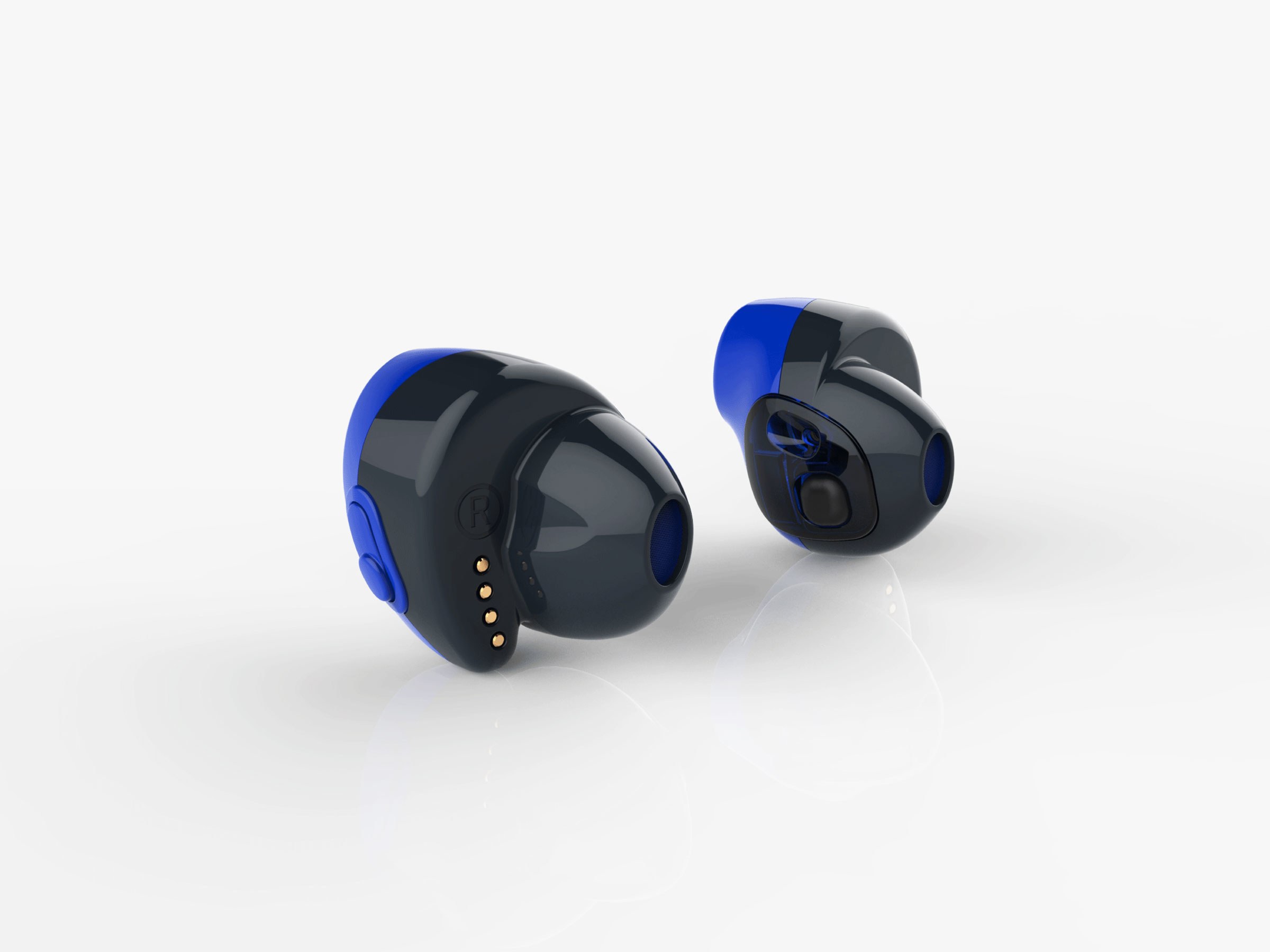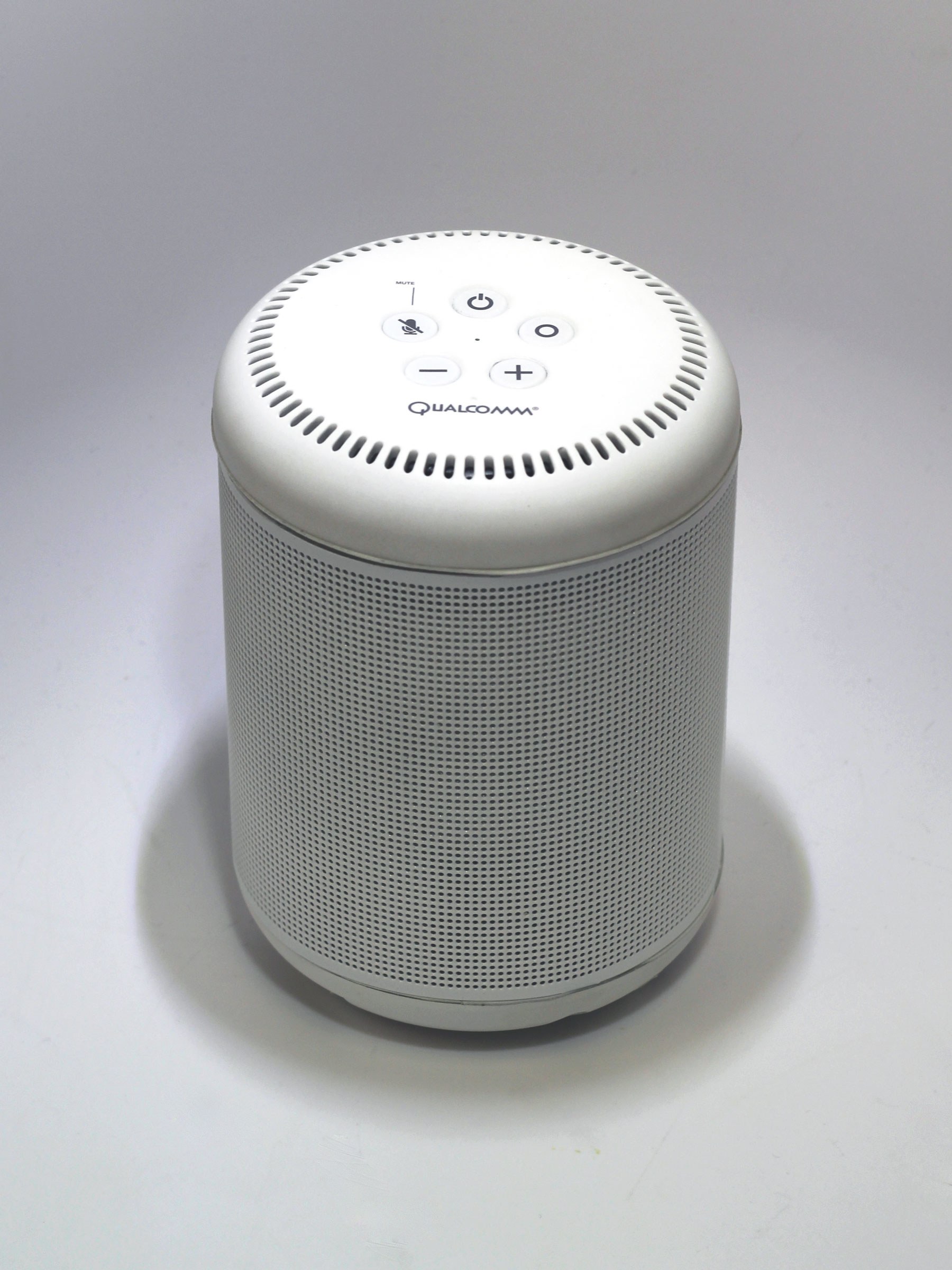
A biometric headset like this is one of the thousands of devices that Qualcomm hopes to drive its chips in the future.
[Netease Technology News, January 10] "Connection" said that you want to see the future? Look at the chip products. The new chip from Qualcomm points to the future of computing. The chip maker is turning its attention from mobile devices to anything else.
Nakul Duggal, Qualcomm's vice president of product management, heads into a Cadillac SUV with a rectangular hole in his fingertips. The hole is not eye-catching: from the inside, the entire car is like an explosive bomb. The direction of the seat is disorderly, and the wire hangs where you can't imagine it. A few feet away, the other two cars - a Ford and a Maserati - were about the same.
Qualcomm’s car team bought these new vehicles and then dismantled them. Now, in a remodeled large-scale soda water plant in San Diego, they are branding these cars with Qualcomm. The Maserati is closest to being ready: There is a Tesla-style vertical screen between its two front seats and several screens on the center console. On Cadillac, the team also installed a removable screen in the back seat and even replaced the side mirror with a display screen. "When the driver is sitting there, you should be able to run Netflix on this screen or on that screen." Dugel said, "You can't use streaming video services while driving, but you should be able to use Audible, Yelp. And OpenTable should also be available.†The entire car has a total of six cameras installed, intended to assist autonomous driving in all directions.
Different parts of the car run different software. All infotainment parts are equipped with a deeply customized Android system. Key components such as speedometers and fuel gauges use QNX, an ultra-reliable software specifically designed for BlackBerry. All of them run Qualcomm's Snapdragon processor, just like your smartphone. With the built-in Qualcomm modem in Dugger's finger hole, they will all work. It supports 3G networks, various LTE releases and Qualcomm’s new 5G technology that will take over the future.

Qualcomm is usually used only for mobile device processors and can drive other networking products like this smart speaker.
Qualcomm made a fortune by virtue of its success in the smart phone market, but for the future, the company saw greater opportunities for development. Qualcomm sees itself as a branded company that connects various things. First, its chips help connect people to the Internet and connect them on mobile devices. Today, it wants to play an even more important role in an even larger market: connecting all the devices to be connected, from cars to light bulbs, to augmented reality (AR) glasses. Of course, many companies have the same vision, but Qualcomm has an advantage: it is not trying to sell a device or promote a platform. It is the product behind the creation of the product, creating the engine that drives millions of different devices. That means that no matter what Qualcomm produces, it will be used all over the world. Qualcomm is creating some crazy new products.
5G network
At some point in the next two or three years, if all goes well, Qualcomm will play a leading role in creating a new wireless network for the world. LTE and 4G will be replaced by 5G, which uses UHF millimeter-wave spectrum to transmit much more data at much faster speeds. “It's faster than your current home network and faster than the network where you work,†said Sherif Hanna, director of product marketing at Qualcomm. You will be able to download movies or stream HD virtual reality (VR) content in seconds. Speed ​​will no longer be a pain point for people.
The rapid speed is only part of the high-pass plan. The company believes that with 5G technology, it will also create a more reliable and stable network. The latency of the network is much lower, which means that you may not even notice that something is happening locally on your device or streaming on the network. It will never slow down. That means multiplayer mobile games are very smooth, which means you no longer need to store anything locally. Everything is on the Internet and you will not feel the difference.
Hannah quickly pointed out that LTE and Qualcomm have made significant room for improvement in the recent major network changes. There is more capacity in the spectrum and more room for speed and reliability. However, when Qualcomm engineers created LTE, they never imagined that any device anywhere would connect to the Internet at the same time. They are building LTE for mobile phones, not for urban water pressure meters that need to be used for decades. Hannah said that “covering tens or hundreds of thousands of devices in a small area†is one of the biggest challenges for 5G. “Not only connecting people, but also connecting the whole world... The areas covered by comprehensive coverage are not just millions, but billions.â€
establish connection
Over the years, Qualcomm has repeatedly realized that if you make a substantial improvement in the network, users will use it to do something completely different. In helping develop the 5G protocol and system, Qualcomm's team is also asking itself the same question repeatedly: What will it bring? "We plan for three years," said Keith Kressin, senior vice president of product management at Qualcomm. The company is thinking about technology from a more long-term perspective. Now, what happens after they try to figure out how to bring everyone an ever-fast ultra-fast internet connection. The ubiquitous GPS spawned Uber; the mobile camera brought Instagram. When everyone does not have to worry about their own network traffic or service threshold, what will the world become?
Of course, no one inside Qualcomm knew the answer, but they had some ideas. They have been discussing the future of 5G for several years and they want to make the right design and infrastructure decisions to support the world that does not yet exist. What they are very clear about is that the kind of fast, ubiquitous network connection will help artificial intelligence (AI) to improve more quickly and affect more services at the same time. It may also allow more people to watch more videos. It seems that our devices may gradually become more simple, because they will get more performance and intelligence from the cloud.
Soon, your mobile phone may become just a screen, a battery, and a processor that handles simple tasks (and things you don't want to transmit over the Internet, such as your fingerprint or password). You may have similar screens in your mirror, on your car, and everywhere in your house. When those screens need to handle complex tasks, whether it is game-level graphics or voice assistance services that provide help, you can take full advantage of cloud services. "If you want to run applications with high computing performance requirements, such as real-time VR or machine learning, with 5G, it will be enabled in a matter of moments," said Matt Grob, executive vice president of Qualcomm Technologies.
Once that happens, since most of the complicated operations happen in the cloud (before streaming back to your phone immediately), your battery may be able to take longer, after all, your phone doesn't have to do that much jobs. Qualcomm is also building processors for smart headsets and ordinary headsets. Through this fast network connection, such products will benefit more from the shunting of processing work. Dugger's laboratory driverless car project also needs it to connect all people, cars and surrounding objects. In the future, almost anything may run on mobile-class processors and compact batteries, and the processing of substantive tasks is entirely up to the cloud's supercomputer. The difference between online and offline, mobile and WiFi networks may become irrelevant. All your devices will be just screens, and their superpowers will arrive in an instant.
Future vision
In the future of this kind of Internet of Things imagined by Qualcomm, smart phones may not be your main device. As a result, the company is betting on a wide variety of technologies, from smart assistants to connected homes to augmented reality. It wants to see highly intelligent robotic vacuum cleaners, electric lights that are turned off automatically when no one is in the house, and the appearance of microwave ovens that automatically identify internal objects and perfect cooking, and sell chips for them.
Tim Leland, the company’s vice president of product management, said the company’s biggest opportunity may come from AR. "At the end of the next decade, AR glasses may not completely replace smartphones, but their sales will surely reach 100 million," he said. Leland said that Qualcomm is in a very favorable position and hopes to become an important player in the AR field, just like in the smart phone market. "AR looks very much in line with us from any point of view: low power consumption, networking, multi-mode connectivity, WiFi and wireless, multimedia, display processing." He said, "They are all things we are researching."
In this early stage, there is no essential technology product that can really push the development of AR. Qualcomm is trying to push this kind of technology from all aspects. "We are cooperating with all the big companies and trust me. We are working with all these companies," Leland said. He is urging partners to produce transparent displays because they are more suitable for superimposing digital objects onto real-world objects. He is working with mobile operators to realize the speed (and the price of traffic packages) that will make streaming VR practical. He is working with other companies on product design, working with engineers to optimize batteries, and so on. "One of the interesting things about working here is that you have access to any other elements of the ecosystem," Leland said. "There is no one we cannot meet."
Compared to the past, the current cooperation environment is not so good. In the past few years, large companies such as Samsung and Huawei have completely stopped purchasing CPUs from Qualcomm and started independent research and development. Of course, Apple has been doing this for years: It independently develops chips, software, hardware, and services with significant results. Gao has been working with a few partners for 10 years, and their equipment sales have also set a historical record. Now, it may have to work together with more partners to collaborate on more devices, many of which will not be traditional technology companies. Seshu Madhavapeddy, another Qualcomm vice president of product management, pointed out that to adapt to the Internet of Things, "we have to build chips at various price points, from $100 to just $1."
If Qualcomm can find its way into these emerging industries and make itself indispensable, just as in the smart phone market, then its influence on the future of the technology industry may further expand. Maybe, just to bring all Android manufacturers with the necessary components they want in 2020 on any Snapdragon chip, it will make 5G happen. It is expected to make these two technologies mainstream by embedding augmented reality and voice assistance in millions of new devices. So, a few years later, if you find yourself streaming games to your VR helmet, your car is driving to your home, and your home is fully networked, you are living in the future that Qualcomm envisioned for several years. In this future, everything is interconnected and everything works. (Lebang)
Other household electric appliance
gree , https://www.greegroups.com
